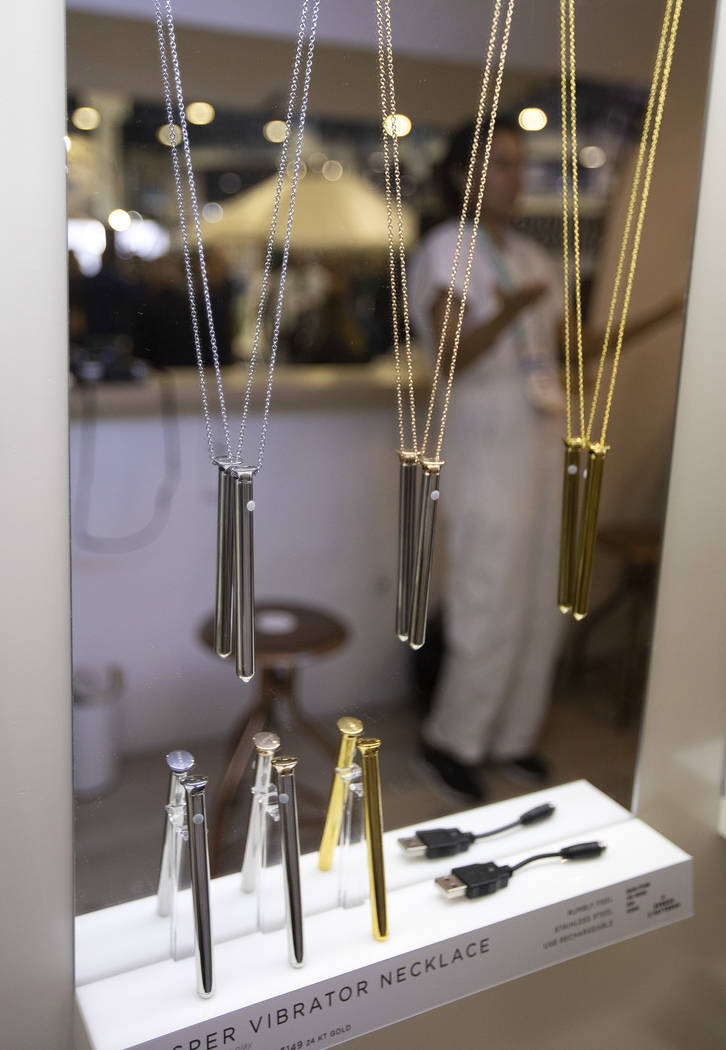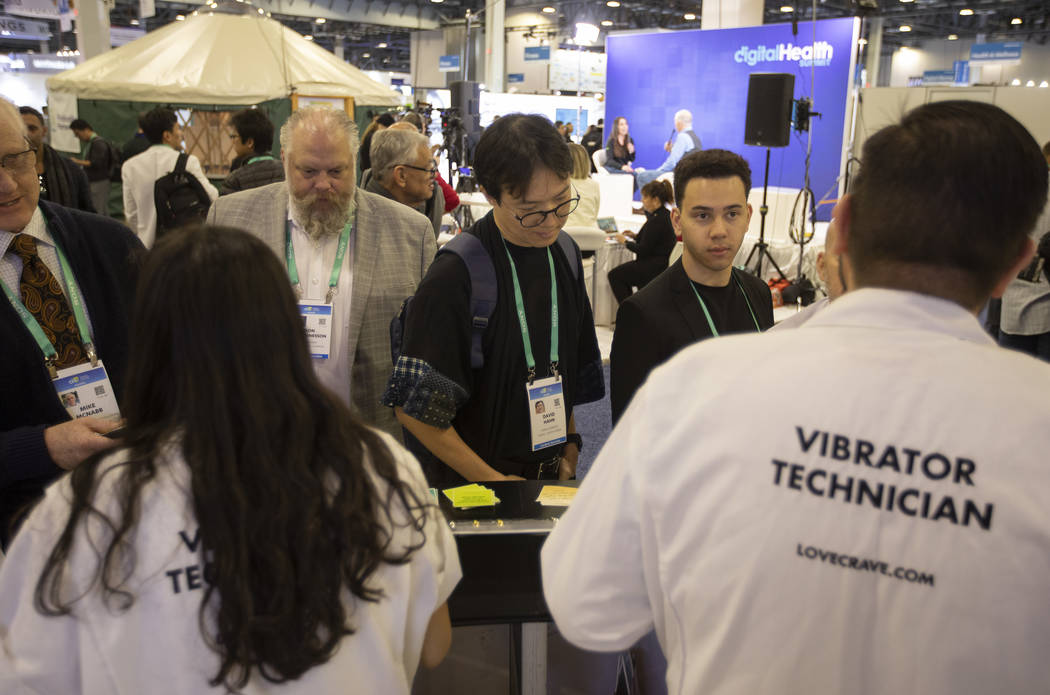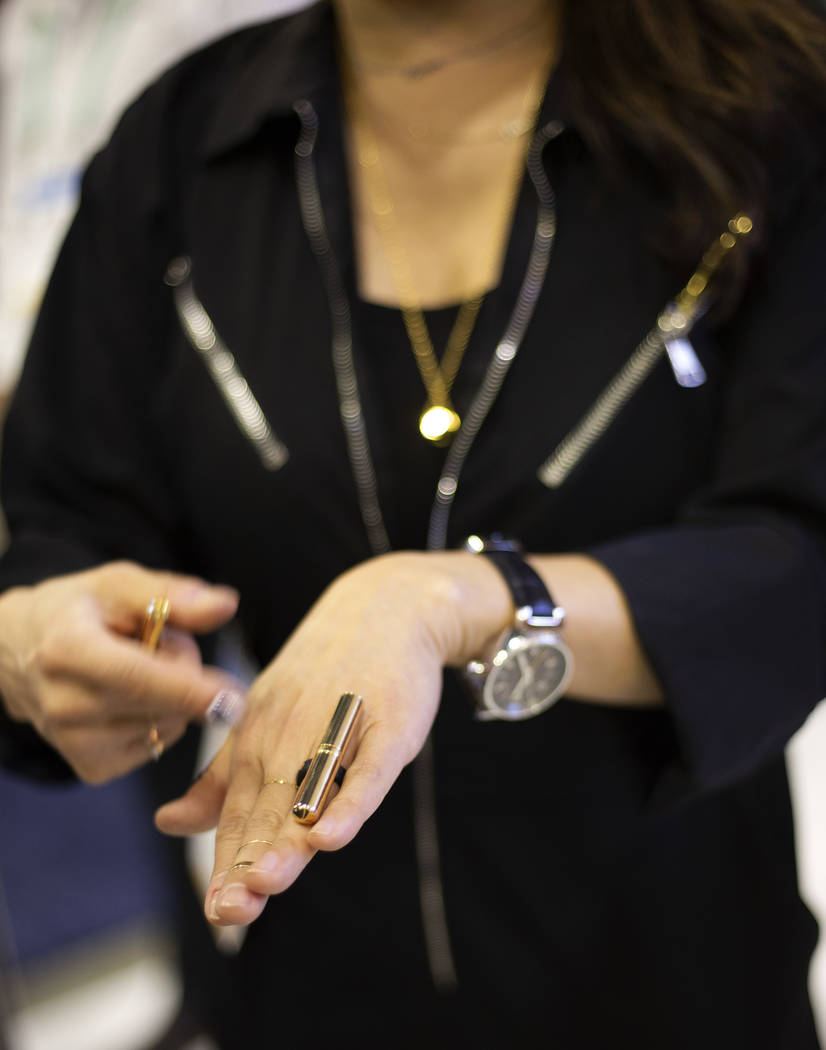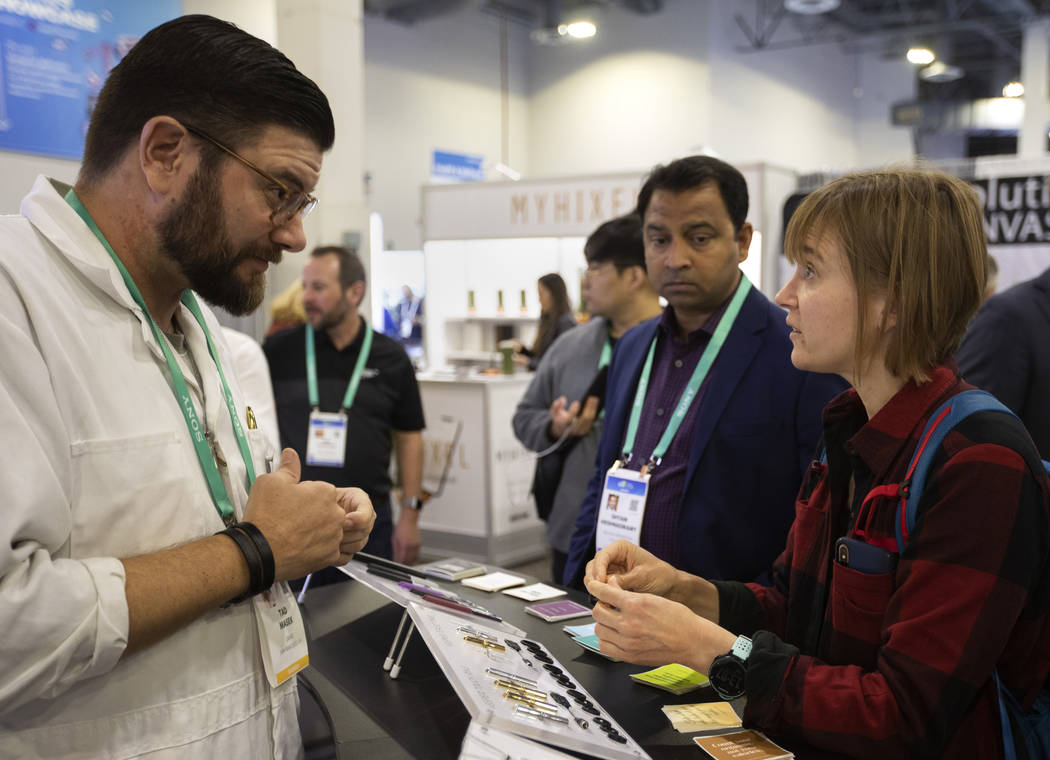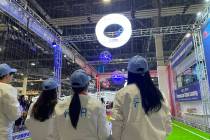In CES’ first year allowing sex tech, visitors build own vibrators
In the first year that CES is permitting sex tech companies to show their products, one company went a step further by hosting workshops where small groups could build those products themselves.
Electrical and mechanical engineers for Crave guided visitors on how to assemble the motor, circuit board, battery and silicone for their flagship Duet vibrator.
From a hardware perspective, the technology is no different from other health and wellness products displayed at the four-day trade show. And for Crave co-founder and designer Ti Chang, products that focus on women’s sexual health and wellness deserve equal representation on the showroom floor.
“I think CES is a show for technology that furthers humanity and improves people’s lives,” said Chang, co-founder and designer of Crave. “Women are 50 percent of the population, and products for us are just as important as products for men.”
The San Francisco-based company arrived at the trade show with a 1961 Airstream outfitted with neon, product displays and a counter for the Build-A-Vibe workshops. Above the Airstream hung a manifesto that summed up the brand’s mission statement: Own your pleasure.
“I truly believe that when people own their pleasure, they live more fulfilled and happy lives,” Chang said. “And so for me, it’s just being able to create these products that support them to do that.”
Changing policy
Last year, sexual health company Lora DiCarlo won a 2019 CES Innovation Award for a prototype of a vibrator-like device. Two months before the trade show, convention sponsor Consumer Technology Association revoked the award and the company’s space on the show floor.
According to Lora Haddock, who owns the company, the CTA said any products deemed “immoral, obscene, indecent, profane or not in keeping with CTA’s image will be disqualified.”
“CES has had products for men, such as VR pornography and straight-up silicone sex dolls for men,” Chang said. “She fought back. I’m happy they’re doing the right thing and allowing women’s sexual health to be a part of the conversation at CES this year.”
In the first year that CES allowed women’s sex technology products in the health and wellness category to be showcased and qualify for awards, 10 companies exhibited, many owned by women.
“It was really important that when we talked to the CTA early on and we had that dialogue, that we didn’t just bring ourselves to the show but we brought other folks up along with us because we know all ships rise with the tide,” Haddock said Thursday night at a closing party to celebrate the company. “We’re really excited because now we see a show that’s more respectful. It’s far more inclusive, and we’re seeing sex tech that’s really being done right.”
Women-led company Lioness developed the first vibrator to be featured in the Last Gadget Standing contest.
Its smart vibrator features biofeedback sensors and uses anonymous data and artificial intelligence to see how various types of arousal occur and when.
“As women founders, we just want to make a great vibrator in general, so we did things like having a handle that’s facing toward you. Most vibrators look like something that’s supposed to go to somebody else because usually men design these vibrators,” co-founder Anna Lee said.
Lee said sex tech is featured this year on a trial basis, which means being in the top 10 competitors at Last Gadget Standing is contributing to the validity of the industry at CES.
“Getting Last Gadget Standing is kind of an in-your-face, we deserve to be here,” Lee said.
Equal representation
For Chang, the inclusion of women’s products at CES reflects a growing trend in encouraging healthy conversations regarding pleasure without stigma.
“We’ve seen this over and over again,” Chang said. “The public is ready to have this conversation. The media is ready. But tech companies like Facebook, Instagram, Twitter and CTA and CES have been the gatekeepers of this conversation.”
At a convention that traditionally sees a disproportionately higher attendance of men, Crave garnered attention from both men and women.
“I wanted to see where CES placed them because I know there was a controversy,” said Steffi Paepcke, an attendee who does robotics research and design. “Male sexual well-being and pleasure is always at the forefront of this industry, whereas women are being overlooked. I think it’s important from an equality perspective to have both represented.”
Contact Janna Karel at jkarel@reviewjournal.com. Follow @jannainprogress on Twitter. Review-Journal staff writer Sabrina Schnur contributed to this report.




